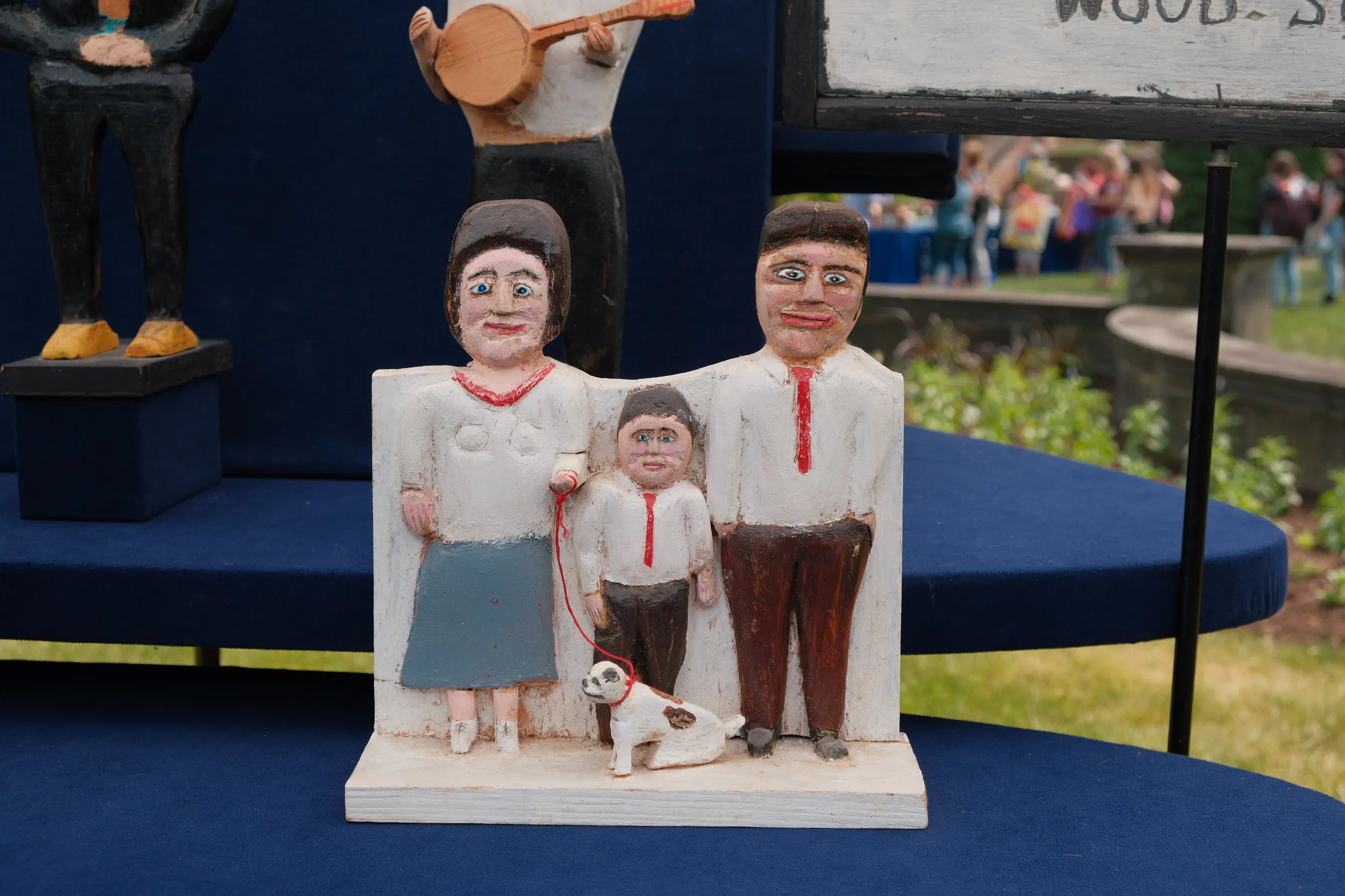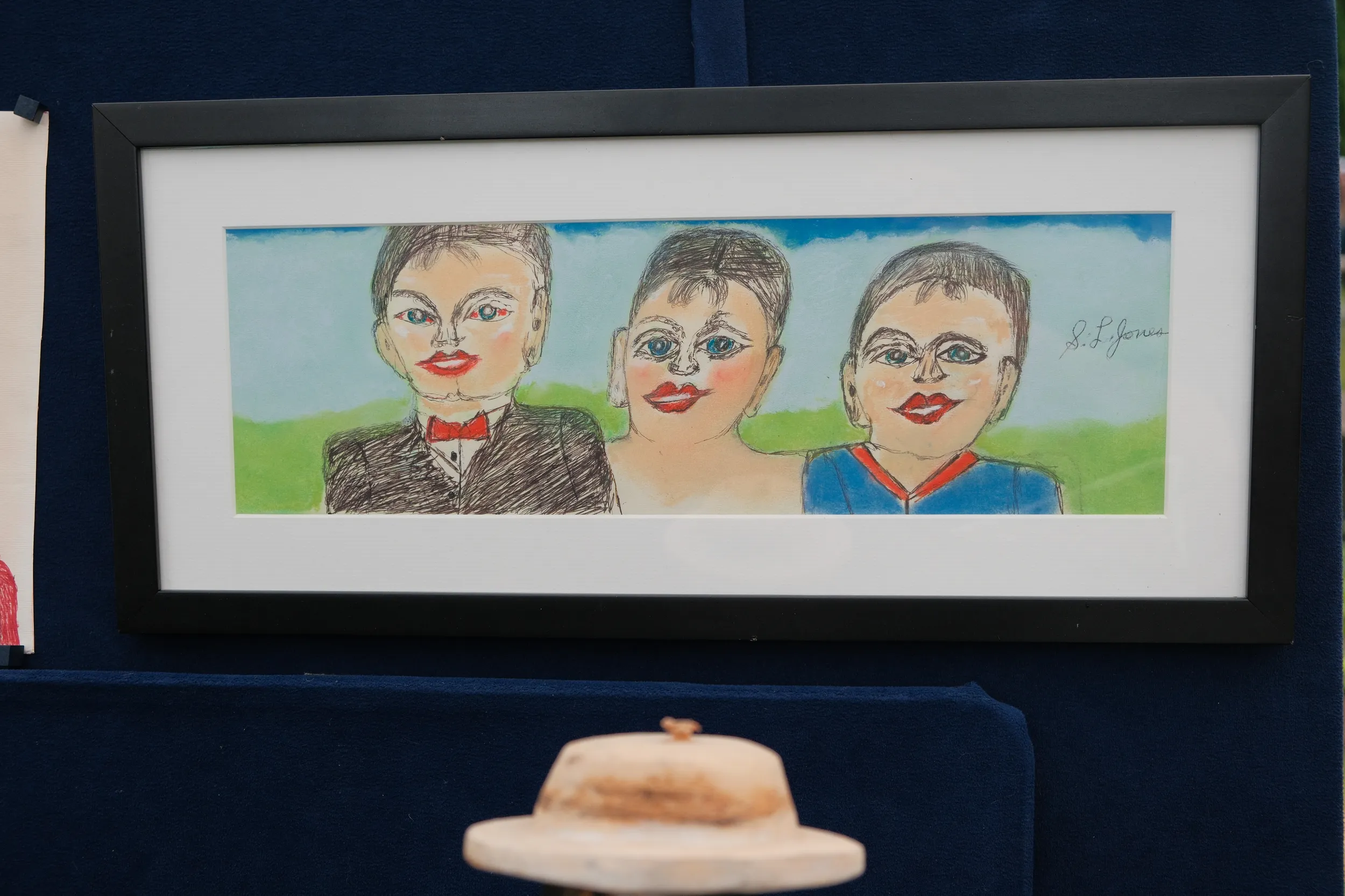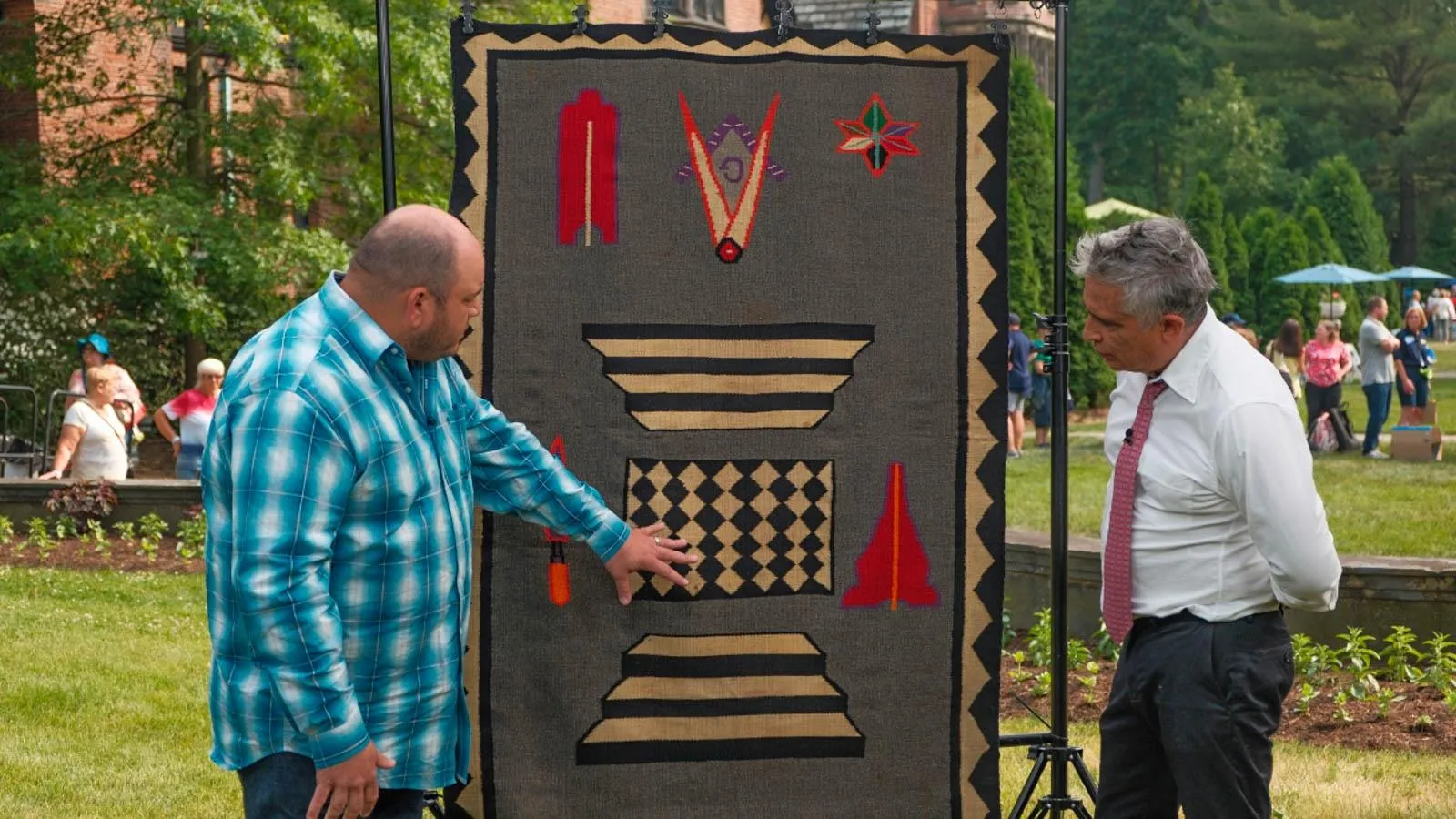S.L. Jones Carvings & Drawings
GUEST: I brought in some S.L. Jones carvings and drawings that are really near and dear to my heart, and they're a focal piece in my home. From what I gather, he started carvings after his first wife passed away. And he was from West Virginia. And he would do his carvings, and he loved animals, and he played the fiddle. So that's why this one I love. And then he, he moved on to drawings after he… it was hard for him to carve.
APPRAISER: He's an artist, and he's, uh, self-taught.
GUEST: Mm-hmm.
APPRAISER: And he was from West Virginia, and he worked for the railroads. He worked for the Chesapeake in Ohio Railroad for 45 years.
GUEST: Mmm.
APPRAISER: The body of work that he created was really, after he retired, which was at about the age 67...
GUEST: Mm-hmm.
APPRAISER: ...that he started to carve. And right up to the end of his life that he was still doing drawings. So most of this was done 70s, 80s, 90s. He was born in 1901. He died in 1997. And his home and artist shed became a focal point in the area, where people would meet, tell stories, he would play the fiddle, he would do carvings. They're all signed pieces.
GUEST: Yes.
APPRAISER: Correct? Let me show what his signature looks like. S.L. Jones. Tell us, what was your first piece? You didn't buy them all together?
GUEST: I didn't. I started buying the drawings in the late '90s. And it was because that was all I could afford.
APPRAISER: Okay.
GUEST: And I have probably 12 drawings at home, in addition to the two here. When I found his sculptures, I loved them. I bought the ones that I could afford. So, I believe this was the first one, and then the second one. And then the third, fourth, and then, then the sign. Then the sign. I purchased, and a few of them, I actually had to go on a payment plan because they started to get expensive. And now I, I can't afford them now.
APPRAISER: It's not about finding this material for no money. It's about being a collector.
GUEST: Right.
APPRAISER: It's starting with something you can afford.
GUEST: Mm-hmm.
APPRAISER: Being intrigued by that artist, doing research and following up. And here it is, 20 years later?
GUEST: Yes, 20 years later.
APPRAISER: 20 years later, you have a collection.
GUEST: Mm-hmm, mm-hmm. Yes.
APPRAISER: And a great cross body of his work And something very precious.
GUEST: Mm-hmm.
APPRAISER: The sign that he hung outside his shop.
GUEST: Mm-hmm.
APPRAISER: A real connection to the artist. Talk about some of the prices you paid for things.
GUEST: Well, the first piece, I paid $500 for. And this one I bought in quick succession for about $500, as well. This one was $2,800. That was further down the road, a few years later. And this one, I think this one was $1,500.
APPRAISER: Okay.
GUEST: And I do know the sign was $3,500.
APPRAISER: And the drawings?
GUEST: Oh, the drawings. $250 for this one, and $300 for this one.
APPRAISER: They're all beautifully carved.
GUEST: Mm-hmm
APPRAISER: Typically, he used yellow poplar or maple. The market for his material is thin. We're gonna put some retail values on these pieces. The horse we're going to start with,
GUEST: Okay.
APPRAISER: and we're gonna call that $5,000. Okay?
GUEST: (gasps) Wow.
APPRAISER: And then we're gonna go to this plaque over here of the family.
GUEST: Mm-hmm
APPRAISER: Wonderful, with the dog. We're gonna say that's $5,000.
GUEST: (gasps) Okay.
APPRAISER: And the single man over there, we're gonna say he's $5,000.
GUEST: (gasps) Okay.
APPRAISER: So this man over here is actually playing the banjo.
GUEST: Yes.
APPRAISER: As you know, Jones was a fiddler.
GUEST: Mm-hmm.
APPRAISER: And your first piece, ironically,
GUEST: Mm-hmm.
APPRAISER: in terms of the carvings, is worth the most. And we're gonna put a value on that of about $7,500 or $8,000.
GUEST: (gasps) Oh, my goodness.
APPRAISER: All right? Now, the drawings, which he did later in life,
GUEST: Mm-hmm.
APPRAISER: they're not as hotly collected. It's his carvings that people want. So, the drawings are in the $450 to $500...
GUEST: Okay.
APPRAISER: ...a piece range.
GUEST: Mm-hmm, mm-hmm.
APPRAISER: The sign to his shop. People obviously love those things. This is a museum piece because there are museums that display his work and have small bodies of work by him.
GUEST: Mm-hmm.
APPRAISER: So, it's a number that I'm just gonna say $10,000.
GUEST: Okay.
APPRAISER: I think time will tell on his whole body of work to find out exactly where he stands amongst the other Appalachian carvers, his larger heads...
GUEST: Mmm.
APPRAISER: Some of those have brought $15,000, $20,000.
GUEST: Yes.

$33,400 - $34,000 Retail
Photos


Featured In

episode
Stan Hywet Hall & Gardens, Hour 2
Get wowed by treasures at Stan Hywet Hall & Gardens, like one valued at up to $125,000!
20th Century

appraisal

appraisal

appraisal
Understanding Our Appraisals
Placeholder






